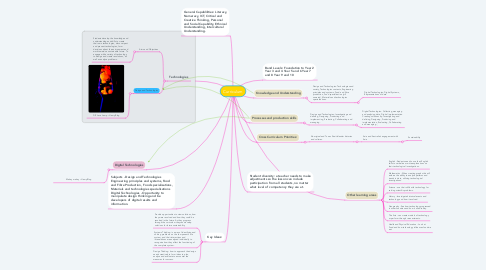Curriculum
by Linda Hames


1. Digital Technologies
1.1. Makey makey – Hamy Blog
2. Subjects - Design and Technologies Engineering principles and systems, Food and Fibre Production, Food specialisations, Materials and technologies specialisations Digital Technologies - Opportunity to manipulate design thinking and be developers of digital results and information.
3. Technologies
3.1. Aims and Objectives
3.1.1. Students develop the knowledge and understanding and skills to create their own technologies, discover past and present technologies, form decisions about the environment and work towards a sustainable future. To engage with a variety of technology, to design and create resolutions, as well as analyse problems.
3.2. Design and Technologies
3.2.1. DIY Lava Lamp – Hamy Blog
4. General Capablilities: Literacy, Numeracy, ICT, Critical and Creative Thinking, Personal and Social Capability, Ethnical Understanding, Intercultural Understanding.
5. Key Ideas:
5.1. Provide opportunities to view solutions, how they were resolved and how they could be resolved in the future. As they progress through the curriculum they can develop solutions for future sustainability.
5.2. Systems Thinking: is a way of identifying and solving problems on the components of a system, and their interactions and interrelations are analysed individually to recognise how they effect the functioning of the complete system.
5.3. Design Thinking: how to approach the design needs creatively to form ideas to plan, analyse and evaluate to encounter the measures for success.
6. Band Levels: Foundation to Year 2 Year 3 and 4 Year 5 and 6 Year 7 and 8 Year 9 and 10
7. Knowledge and Understanding
7.1. Design and Technologies: Technologies and society, Technologies contexts, Engineering principles and systems, Food and fibre production, Food specialisation (yr 5 onwards), Materials and technologies specialisations.
7.1.1. Digital Technologies: Digital Systems, Representations of data.
8. Processes and production skills
8.1. Design and Technologies: Investigating and defining, Designing, Producting and implementing, Evaluating, Collaborating and managing.
8.1.1. Digital Technologies: Collecting,managing and analysing data, Digital implementation. Creating solutions by: Investigating and defining, Designing, Producing and implementation, Evaluating, Collaborating and managing. ,
9. Student diversity: a teacher needs to make adjustments so the lesson can include participation from all students, no matter what level of competency they are at.
10. Cross Curriculum Priorities:
10.1. Aboriginal and Torres Strait Islander histories and cultures.
10.1.1. Asia and Australia's engagement with Asia
10.1.1.1. Sustainability
